- TOP
- Mirror with Chrysanthemums, Butterflies, and Birds
Overview
Mirror with Chrysanthemums, Butterflies, and Birds
- Museum No.
- EK17-13
Showing 1-6 of 1
| Title | Mirror with Chrysanthemums, Butterflies, and Birds |
|---|---|
| Designation | |
| Artist | |
| Category | Metalwork(E), Bronze Mirrors |
| Country | Japan |
| Period | Heian Late |
| Century | 12th |
| Year | |
| Quantity | |
| Materials | |
| Dimensions | Diameter 10.5cm Rim height 0.6cm Rim width 0.15cm |
| Inscription by | |
| Signature/Seals Etc | |
| Donor |
Included Works

EK17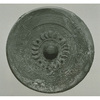 Mirror with Abstract Animals in Band
Mirror with Abstract Animals in Band
EK17-1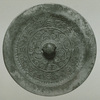 Mirror with Whirlpool Design
Mirror with Whirlpool Design
EK17-2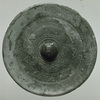 Mirror with Flower Design and Seven Arcs
Mirror with Flower Design and Seven Arcs
EK17-3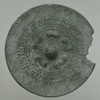 Mirror with Five Animals
Mirror with Five Animals
EK17-4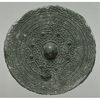 Mirror with Abstract Animals in Band
Mirror with Abstract Animals in Band
EK17-5 Mirror with Four Animals
Mirror with Four Animals
EK17-6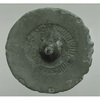 Mirror with Tooth Comb Pattern
Mirror with Tooth Comb Pattern
EK17-7 Mirror with Abstract Animals in Band
Mirror with Abstract Animals in Band
EK17-8 Mirror with Pines and Cranes
Mirror with Pines and Cranes
EK17-9 Mirror with Cranes and Pines and Butterflies
Mirror with Cranes and Pines and Butterflies
EK17-10 Mirror with Arabesque and Phoenixes
Mirror with Arabesque and Phoenixes
EK17-11 Mirror with Chrysanthemums and Birds
Mirror with Chrysanthemums and Birds
EK17-12 Mirror with Globeflowers and Flying Sparrows
Mirror with Globeflowers and Flying Sparrows
EK17-14 Mirror with Chrysanthemum Branches and Flying Sparrows
Mirror with Chrysanthemum Branches and Flying Sparrows
EK17-15 Mirror with Autumn Plants, Butterflies, and Birds
Mirror with Autumn Plants, Butterflies, and Birds
EK17-16 Mirror with Cranes and Pine Needles
Mirror with Cranes and Pine Needles
EK17-17 Mirror with Auspicious Flowers and Birds
Mirror with Auspicious Flowers and Birds
EK17-18
This object may be one within a set or the title of a set. To see all objects in the set, perform a Category Search by the Museum Number below, entering numerals only before the hyphen.







The bronze of this mirror is dark brown, and its reflective face is plated with tin. The chrysanthemum-shaped knob surround has been deformed by traces of the rod support used to create the hole in the knob. A roughened surface and a spot where the pattern is indistinct-on the inner side of the straight, narrow rim (on the lower right of the image)-resulted from flaws in the casting process. The earliest appearance of chrysanthemum motifs took the same form as on this mirror, in which the flowers are distributed around the knob. This type of spatial composition, however, with a pair of birds flying in the same direction, seen in elevation, is typical of a group of Chinese Song-style (960-1279) mirrors excavated from a sutra mound at Tado Shrine in Mie Prefecture. The execution of the chrysanthemum leaves in outline is also common to these examples, and probably indicates a production date of early to mid-12th century. The composition includes chrysanthemums and butterflies, a noteworthy style also for the history of painting in Japan.
Japan-Heian-Late